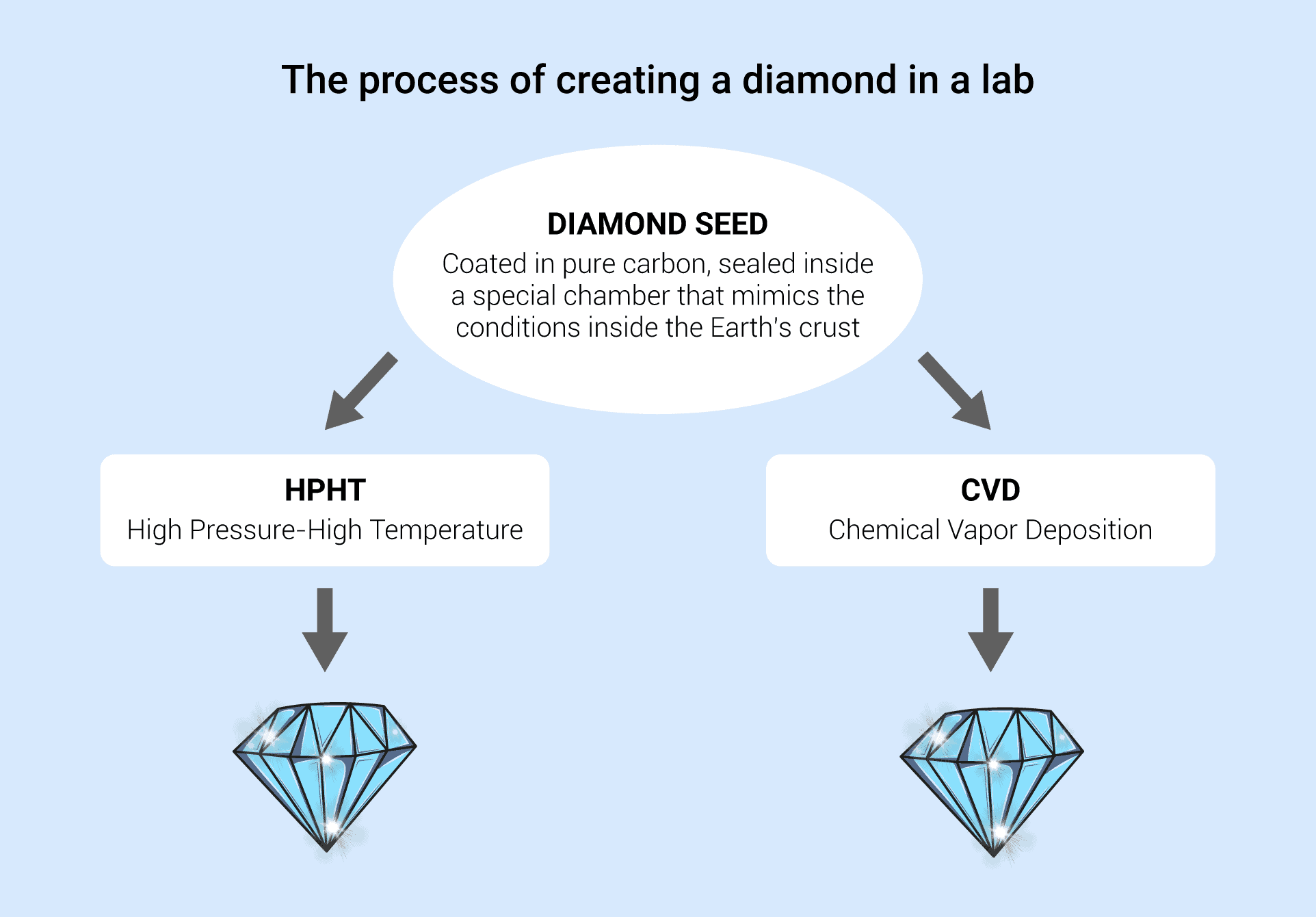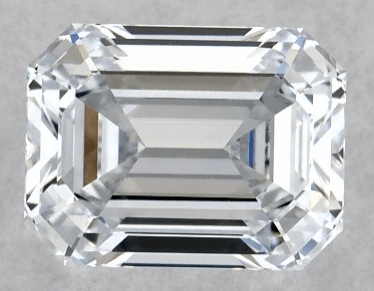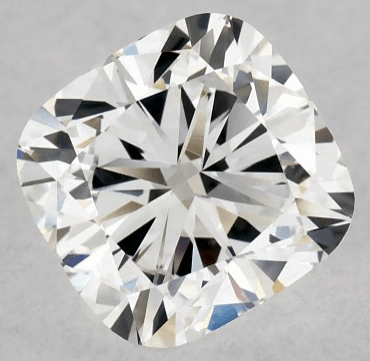We are reader-supported. Buying through any red colored link on our site may earn us commissions. Learn More.
Up to 30% off engagement rings and select jewelry at James Allen!
How Lab Diamonds Are Made
Interestingly, the process by which lab diamonds are created is actually no different to that of natural diamonds. The only difference is one happens naturally in the Earth over billions of years, and the other takes just several weeks in a lab. But scientifically, it’s all the same.
Forming a diamond requires carbon dioxide, extreme heat, and extreme pressure. The effect of this heat and pressure on carbon dioxide kicks off the process that produces beautiful gemstones we know as diamonds.
There are two specific methods used to create lab-grown diamonds. The High Pressure-High Temperature method (HPHT) and Chemical Vapor Deposition (CVD).
Why you should trust us

High Pressure-High Temperature (HPHT) Diamonds
The HPHT method starts with a tiny piece of diamond, called a diamond seed. This seed is placed in pure carbon, and then exposed to heat and pressure mimicking the conditions deep within the Earth’s crust.
A temperature of around 1500 degrees Celsius (2700 Fahrenheit) and pressure of 1.5 million pounds per square inch melts the layer of carbon, forming a completed diamond around the original diamond seed.
How this happens is the carbon melts and dissolves under the heat. It is then solidified by the pressure (turning it into a diamond), and cooled.
There are several different machines commonly used to apply the heat and pressure for the HPHT process – a belt press, cubic press, and the split-sphere (BARS) press. The latter is the most common these days, as the most efficient way of growing diamonds, particularly larger diamonds.
Look at this gorgeous 2.60ct H VS2 Princess cut diamond from James Allen that goes for $4,280 or this 3.23ct Cushion cut diamond from Blue Nile for $6,988.
Chemical Vapor Deposition (CVD) Diamonds
The CVD method, short for Chemical Vapor Deposition, uses less heat and much less pressure than HPHT. Instead, carbon-based gases are used to form and grow what we know as a diamond.
The process begins again with a diamond seed. The diamond seed for the CVD process is usually a narrow diamond slice, quite often one that was first created using the HPHT method.
Similar to HPHT, this diamond seed is placed in a sealed chamber. Gases are then introduced to the chamber, typically methane and hydrogen. The environment is then heated to several hundred degrees Celsius. Under this heat, the gases break down, and the carbon atoms from these gases begin to build around the diamond seed.
The CVD method is newer, and less costly than HPHT, since the machinery is smaller and requires less power. However, CVD diamonds often come out in a black or brown color, which then requires HPHT treatment to get the final, colorless diamond. This being said, the CVD method has improved drastically in the last decade, meaning it’s more common for scientists to produce colorless diamonds using only Chemical Vapor Deposition.

Bottom Line Recommendation:
Lab-grown diamonds can be a less expensive alternative to natural diamonds, but don’t retain any resale value and often cannot be resold. Natural diamonds, on the other hand, retain some resale value and prestige and can be resold for at least some of their purchase price.
If you go the lab-grown diamond route, we recommend a reliable vendor like James Allen or Blue Nile, where you can be assured of the diamond’s quality, IGI or GIA certificate, and a competitive price. In general, lab-created diamonds should be sold at significantly less than a comparable natural diamond with the same carat weight, color, and clarity.
As well as being created by natural processes in the Earth, diamonds can also be man-made in a laboratory. These are known as lab diamonds, and can also be referred to as lab-grown diamonds, synthetic diamonds, artificial diamonds, cultivated diamonds or cultured diamonds.
A fairly new phenomenon in the diamond world, lab diamonds offer some advantages to natural, Earth-grown diamonds. Some claim they are more ethical and sustainable. They are also significantly cheaper, giving shoppers an option to get a beautiful diamond on a smaller budget like this example from James Allen.
While lab-created diamonds are not the greatest choice in terms of value, as we explain in this article, it can’t be denied that they are just as beautiful as natural diamonds.
Read on and we’ll elaborate just how these synthetic diamonds are created.
Are Lab Diamonds Different from Natural or “Real” Diamonds?

This is the big question often asked in regard to lab diamonds. How are they different from natural diamonds?
The truth is, lab diamonds and natural diamonds are identical, not just visually, but chemically. Legally, scientifically, however you want to shake it, lab diamonds are “real” diamonds.
”I think lab diamonds are here to stay and I think it’s a choice for the consumer to make, and it’s our job to educate them.… A lab diamond doesn’t say I love you any less than a mined diamond says I love you.” Beryl Raff, Former CEO of Helzberg Diamonds as reported in JCK Online.
Even trained gemologists will have a hard time distinguishing between a lab diamond and a natural diamond. Generally speaking, the only way you’ll know what you have on your hands is by checking the diamond’s certificate.
You can read a comprehensive comparison between lab diamonds and natural diamonds in this article.
How to Choose the Best Lab-Grown Diamond
When you’re shopping for a lab diamond, you want to pay attention to most of the same things as if you’re in the market for a natural diamond. Since, technically, lab diamonds are exactly the same as natural diamonds, the usual things like the 4 C’s are applied to measure the diamond’s beauty.
There are a small number of things specific to lab-grown diamonds you should consider in your buying process, as well as whether you actually want to buy a lab diamond or a natural one.
Here’s a list of recommended vendors for buying lab-created diamonds and diamond jewelry.
HPHT Diamonds vs. CVD Diamonds
First, we should consider the two methods used to create lab diamonds, and whether this is important to consider in the buying process.
The answer? Not really. There is not a noticeable optic difference in HPHT and CVD diamonds. You won’t put two diamonds next to each other and be able to say, “this diamond is more beautiful because it was made with the ___ method”.
The diamond’s creation process may result in a difference in appearance, such as the color of the diamond, but it’s this grade and quality you want to consider in your buying decision, rather than CVD vs. HPHT.
CVD diamonds may be cheaper than HPHT diamonds since the cost involved in the process is lower. But again, it’s the price you should consider in your buying process, not necessarily the creation method.
At the end of the day, it’s probably not worth worrying about whether the diamond was created using CVD or HPHT. It’s often hard to come by this information, for one thing. And while there are some minor things that can be used to distinguish an HPHT diamond from a CVD one (which the GIA explains in this guide), there’s not going to be any clear and obvious difference between the two.
Price
Lab-created diamonds are significantly cheaper than natural diamonds, so when you’re shopping for a lab diamond, make sure the price reflects this.
As an example, here’s a beautiful 2.15 Carat Lab-Created Round Diamond from James Allen, which costs $7,660. If we were to take a natural diamond with the same grades like this one also from James Allen, from the same retailer, you can expect to pay 2-3x as much for the natural diamond ($22,230).
Whether this makes lab-created diamonds a better choice economically is up for discussion. While the price is significantly lower for a lab diamond, compared to a natural diamond, they are also much less rare and have virtually no resale value.
Opting for a lab diamond or a natural one is a personal choice. In any case, make sure you understand that the price of a lab diamond should be much less than that of a natural one with the same grades.
Here are some lab-grown diamonds from James Allen:
Certification
For lab diamonds, we recommend the IGI certificate. By having a certificate, you can compare diamonds more easily to determine which stone gives you the most beauty for your budget.
Color
As with a natural diamond, you’re generally going to want a diamond that appears colorless to the naked eye. There is not as big a difference in price from one grade to the next with lab diamonds, though, so you can afford to go with a higher grade on the diamond color scale than if you’re shopping for a natural diamond.
An F color, like this 1 Carat round diamond from James Allen, is a good point to aim for.
Clarity
When assessing clarity for lab-created diamonds, you want to choose a grade that is eye-clean. This means the diamond has no inclusions or blemishes that are noticeable to the naked eye. This doesn’t mean you need to get the highest grade in clarity. For most diamonds, VS2 or above in clarity will be eye-clean. There may be inclusions noticeable under strong magnification, but they will not affect the everyday beauty of your diamond.
You can save a bit by settling for a grade that is clean to the naked eye, and not overpaying for grades that don’t give a noticeable difference in appearance. For example, this VS2 clarity radiant diamond from James Allen doesn’t have any obvious difference in appearance to a similarly graded VS1 diamond.
Frequently Asked Questions
Lab diamonds are, like natural diamonds, durable and have lasting quality. They’re unlikely to get cloudy or foggy, and are most often clear and brilliant, as there is more control possible during the creation process.
Lab-grown diamonds won’t fade or become dull over time. They last forever, as natural diamonds do, and unless the diamond was cheaply made, you should expect it to retain its beauty for generations to come. As with any diamond, regular cleaning and care of your engagement ring help to preserve its beauty.
CVD is one of two methods used to produce lab-created diamonds. It stands for Chemical Vapor Deposition, and utilizes carbon-rich gas to simulate the natural process by which diamonds are formed, and create a real diamond, in a laboratory, in a matter of weeks.
There is little to no noticeable difference between CVD diamonds and HPHT diamonds. Both are “real” diamonds, chemically identical to natural diamonds created in the Earth.
Traditionally, the HPHT process has been better at creating colorless diamonds, but with modern advancements, the CVD method has more or less caught up. CVD is cheaper and less power-intensive than HPHT, however this has no effect on the quality of the diamond.
Bottom Line
Despite a common misconception that lab diamonds are fake (like cubic zirconia or moissanite), they are in fact just about identical, chemically and visually, to natural or “real” diamonds.
The creation methods used for lab diamonds, either HPHT, CVD or a combination of both, replicates the natural process that occurs over billions of years to create Earth-grown diamonds, and produces a gem with exactly the same chemical makeup. It’s not important to pay attention to which of these two methods is used to create a lab diamond, as both should produce the same end result.
Lab diamonds are significantly cheaper than natural diamonds, so pose an interesting choice if you want a beautiful diamond on a budget. However, we’re hesitant about buying lab-created diamonds, as their long-term value is a mere fraction of a natural diamond’s.
If you do choose to go the lab-grown route, ensure you’re paying a fair price. Any lab diamond should be much cheaper than a natural diamond with the same carat, cut, color and clarity (often more than 2x cheaper). If you find anywhere that advertises lab diamonds for a similar price to natural diamonds, they are likely pulling the wool over your eyes.
Here are more lab-grown topics to browse:
- What is a lab-grown / man-made / synthetic diamond?
- What is the price range of lab-grown diamonds?
- What are the differences between lab-grown vs. natural diamonds?
- Where is the best place to buy lab-grown diamonds?
- Does GIA or IGI certify lab-grown diamonds?
- How to use a lab-grown diamond color chart?
- What is the best lab-grown diamond clarity (chart + scale)?
- What are the best lab-grown diamond stud earrings?
- Where is the best place to buy lab diamond pendants?
- What are the best lab-grown diamond tennis bracelets?
- What is the price of yellow lab-grown diamonds?
- What is the price of pink lab-grown diamonds?

- No questions asked returns within 30 days of shipment. James Allen will send you a paid shipping label to return the ring.
- Lifetime Warranty
- Free International Shipping
- Free prong tightening, repolishing, rhodium plating and cleaning every 6 months
- Provide insurance appraisals
- One free resizing within 60 days of purchase
- Free ring inscriptions
- Best-in-class high quality imagery of all diamonds in stock
- 24/7 Customer Service
- Best-in-class packaging


- No questions asked returns within 30 days of shipment. Blue Nile will send you a paid shipping label to return the ring.
- Lifetime Warranty
- Free Shipping
- Free prong tightening, repolishing, rhodium plating and cleaning every 6 months
- Provide insurance appraisal
- One free resizing within the first year of purchase
- High quality images of about half of their diamonds
- 24/7 Customer Service
- 100% credit towards future upgrades (must be at least double in value)
- Best in class fulfillment

Still afraid of getting ripped off?
Before you buy a diamond, get personal buying advice from industry veterans. We'll help you get the best diamond for the money.
Ask your diamond purchase question here
DISCLAIMER: We don't use your email for marketing. Period.
You Might Like
Diamond Prices: A Complete Guide
A diamonds’ price is determined primarily by the 4 Cs of the diamond. On the wholesale level, diamond prices are first based on a diamond shape and
The Best Places to Buy Engagement Rings
Buying an engagement ring is often one of the first major purchases in a person's life. The process can be fraught with tension as there are so m
1 Carat Diamond Price & Buying Guide
A wide range of 1 carat diamonds exist both in online markets and local diamond jewelry stores. Not only are there significant differences in beauty






